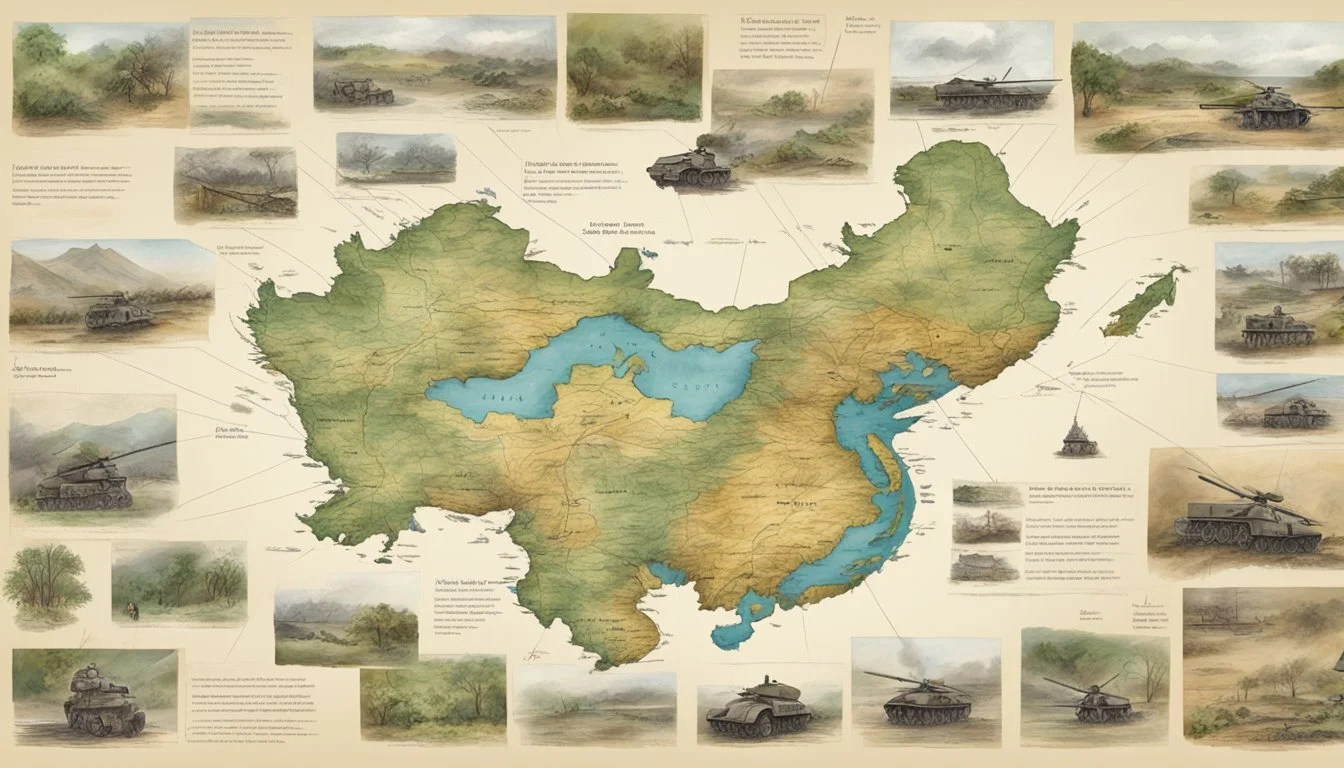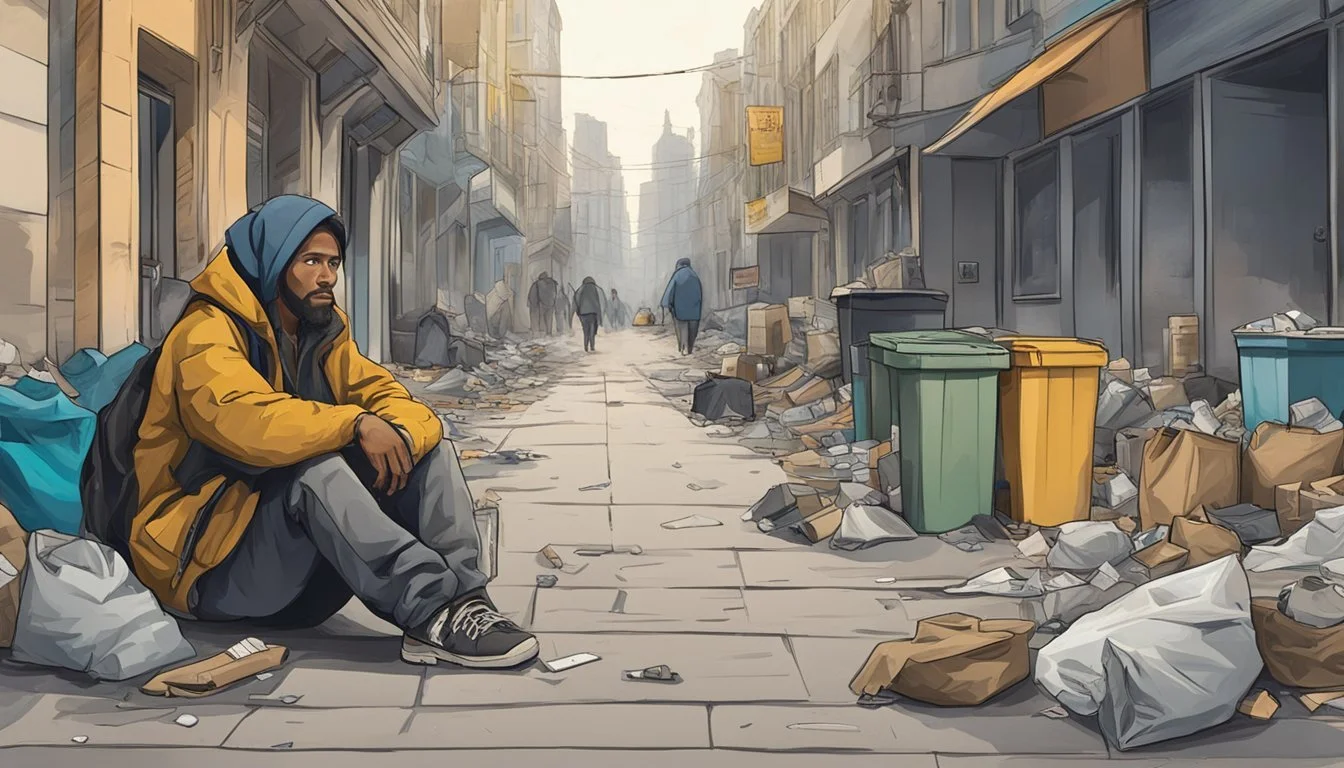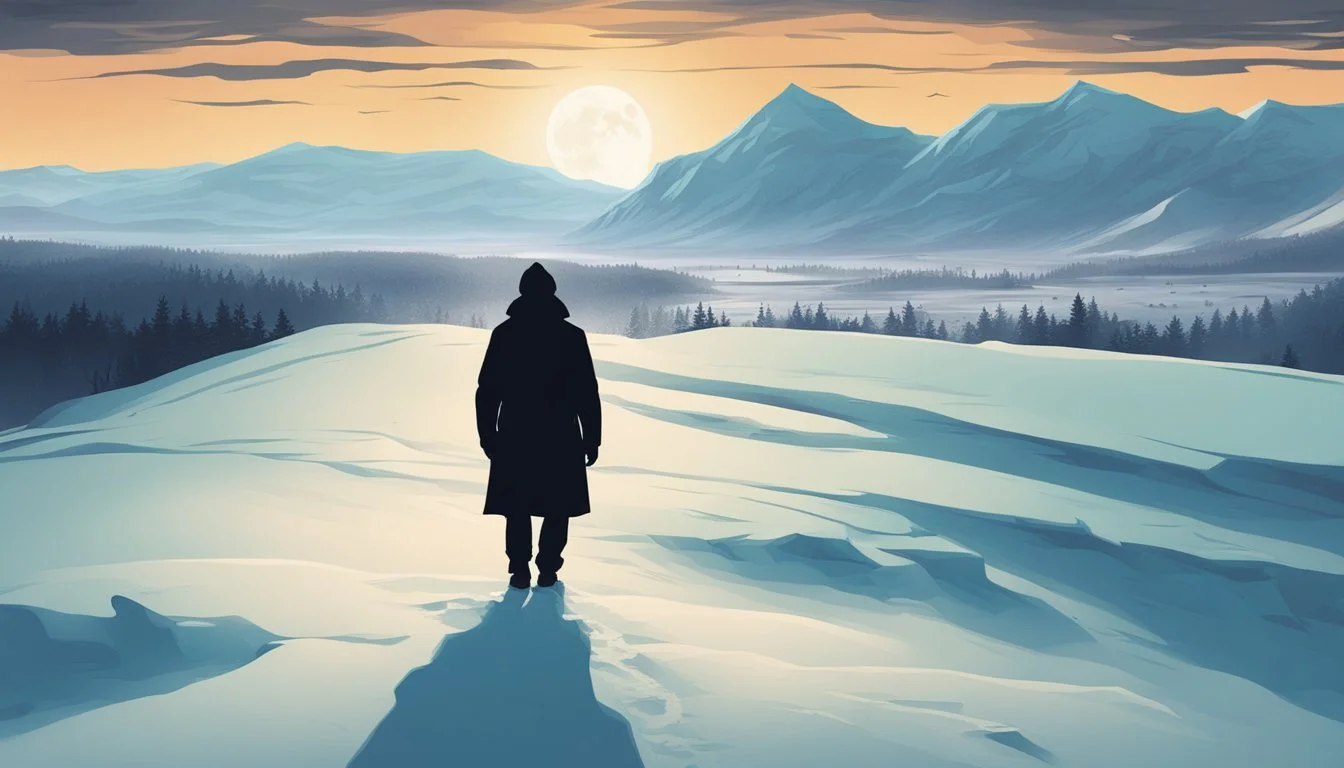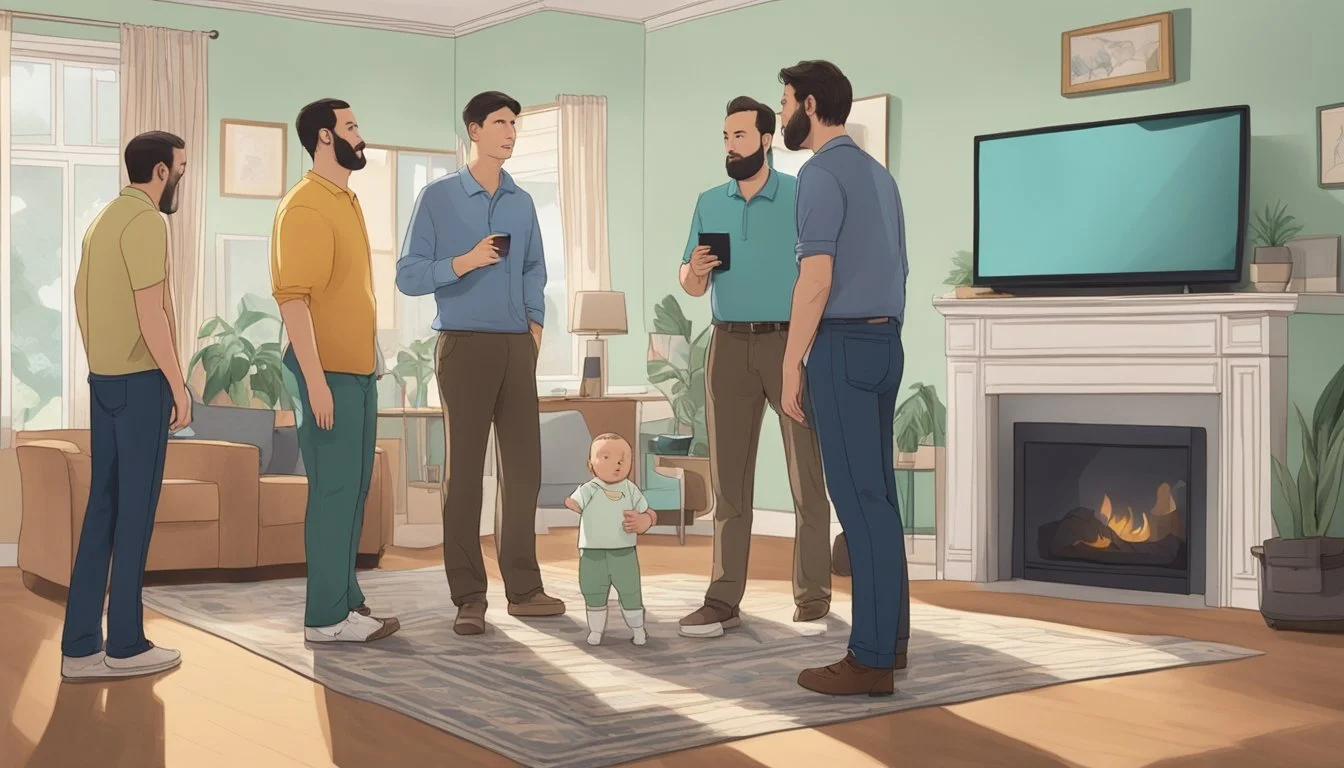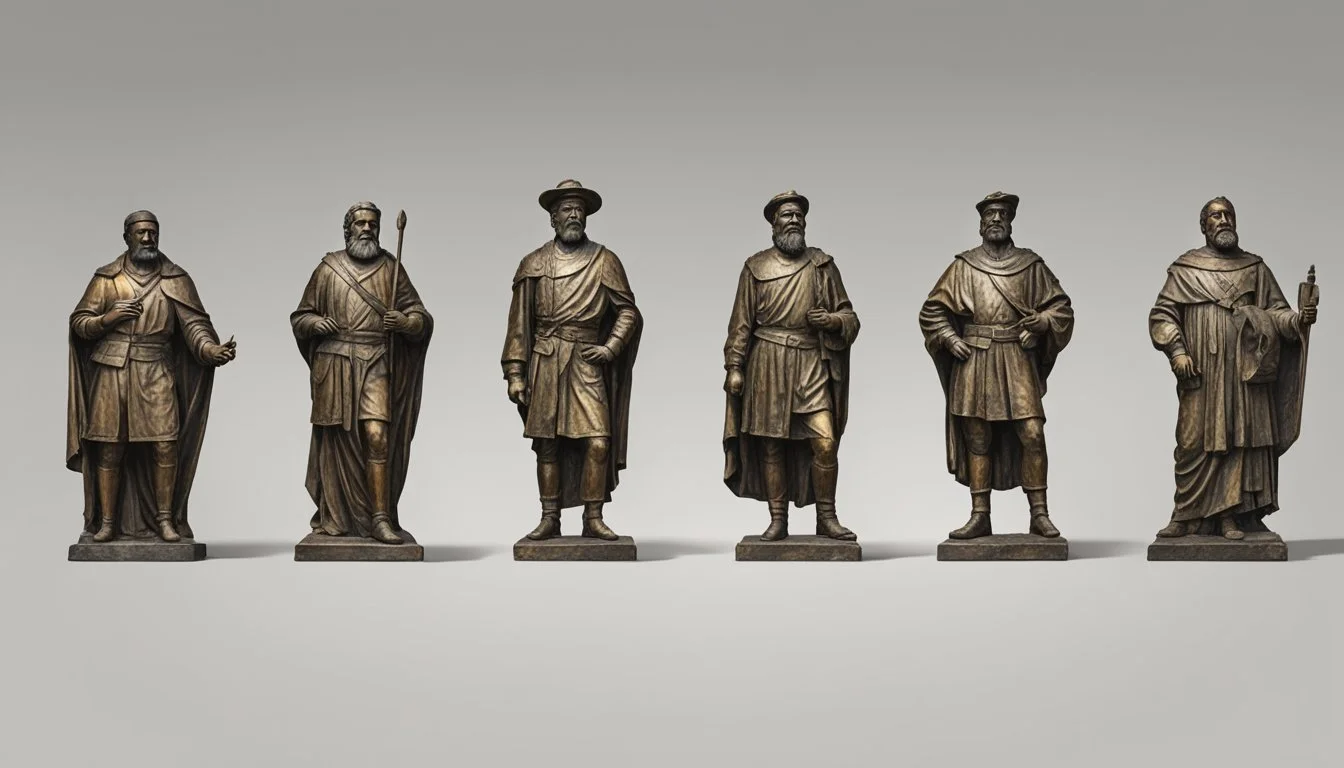Top Documentaries of 1986
A Year of Groundbreaking Non-Fiction Films
The year 1986 was a notable one for cinema, with numerous critically acclaimed films released across various genres. While fictional narratives dominated the box office, documentaries also made significant contributions to the cinematic landscape that year.
Several compelling documentaries from 1986 offered viewers unique insights into real-life stories, historical events, and social issues. These films captured authentic moments and shed light on important topics, providing audiences with thought-provoking content beyond the realm of fictional storytelling. The documentaries of 1986 left a lasting impact on the genre and continue to be appreciated by film enthusiasts today.
1) Dear America: Letters Home from Vietnam (1987)
"Dear America: Letters Home from Vietnam" is a powerful documentary that brings the Vietnam War to life through soldiers' letters. Directed by Bill Couturié, the film uses real correspondence written by American servicemen to their loved ones back home.
The documentary features voice-overs by well-known actors like Robert De Niro and Martin Sheen, who read the soldiers' words. This approach adds emotional depth to the film, allowing viewers to connect with the personal experiences of those who served.
Visually, the film combines footage from various sources. It includes TV news clips, U.S. Department of Defense material, and personal home movies shot by soldiers. This mix of official and personal footage provides a comprehensive view of the war.
The letters in the film cover a wide range of emotions and experiences. They touch on themes of patriotism, friendship, and the shock of encountering a vastly different world. The documentary effectively conveys the human side of the conflict, beyond just military operations.
2) Down and Out in America (1986)
Down and Out in America is a documentary directed by Lee Grant that examines the economic struggles faced by Americans during the 1980s recession. The film focuses on three main groups affected by the economic downturn: Minnesota farmers, urban workers, and the homeless in major cities.
Grant's documentary uses personal stories to highlight the human impact of policy decisions and economic shifts. It shows farmers losing their land, factory workers facing unemployment, and individuals forced into homelessness.
The film's unflinching look at poverty and inequality in Reagan-era America resonated with audiences and critics alike. It tied for the Academy Award for Best Documentary Feature at the 59th Academy Awards.
Down and Out in America stands as a powerful snapshot of a pivotal moment in U.S. economic history. It captures the growing divide between the wealthy and the poor during a time of significant social and economic change.
More information on Down and Out in America
3) The Decline of Western Civilization Part II: The Metal Years (1988)
The Decline of Western Civilization Part II: The Metal Years is a documentary directed by Penelope Spheeris. It examines the Los Angeles heavy metal scene of the late 1980s.
Filmed between August 1987 and February 1988, the documentary showcases the lifestyle and music of various metal bands and personalities. It features interviews with renowned artists such as Steven Tyler, Joe Perry, Alice Cooper, and Gene Simmons.
The film provides an unfiltered look at the excesses and attitudes prevalent in the metal music scene of that era. It captures performances, backstage moments, and candid conversations with both established and aspiring musicians.
Spheeris's documentary serves as a time capsule of a specific moment in music history. It offers insights into the fashion, behavior, and aspirations of metal musicians during the genre's commercial peak.
The Decline of Western Civilization Part II: The Metal Years is the second installment in Spheeris's trilogy of music documentaries. It follows her 1981 film about the Los Angeles punk scene.
4) Living on Tokyo Time (1987)
Living on Tokyo Time is a romantic drama directed by Steven Okazaki. The film explores cultural differences between the United States and Japan through the story of a young Japanese immigrant in San Francisco.
The protagonist, played by Minako Ohashi, faces deportation when her visa expires. To avoid returning to Japan, she agrees to marry a Japanese-American man.
Set against the backdrop of 1980s San Francisco, the film delves into themes of cultural identity, immigration, and cross-cultural relationships. It offers a nuanced portrayal of the Asian-American experience during this period.
Living on Tokyo Time features performances by Ken Nakagawa, Mitzi Abe, and Bill Bonham alongside Ohashi. The film's runtime is 83 minutes, providing a concise yet impactful exploration of its themes.
While categorized as a documentary in some sources, Living on Tokyo Time is actually a narrative feature film. It gained attention for its authentic depiction of cultural challenges faced by immigrants.
5) The Iceman Tapes: Conversations with a Killer (1992)
The Iceman Tapes: Conversations with a Killer offers a chilling glimpse into the mind of notorious contract killer Richard Kuklinski. This HBO documentary features in-depth interviews with Kuklinski from behind prison walls.
Directed by Arthur Ginsberg and Tom Spain, the film presents Kuklinski's disturbing accounts of his life as a hitman. He describes his methods and motivations with unsettling calmness.
The documentary explores the duality of Kuklinski's life. By day, he was a family man. By night, he was a ruthless killer responsible for over 100 murders.
Experts like forensic psychiatrist Dr. Park Dietz provide analysis of Kuklinski's psychology. Their insights shed light on how he maintained his double life for decades.
The Iceman Tapes became a landmark true crime documentary. It spawned follow-up films and influenced later works in the genre.
6) Three Men and a Baby: A Documentary
Three Men and a Baby was not actually a documentary, but rather a comedy film released in 1987. Directed by Leonard Nimoy, it starred Tom Selleck, Steve Guttenberg, and Ted Danson as three bachelors adjusting to sudden fatherhood.
The movie was based on a 1985 French film called "Trois hommes et un couffin" (Three Men and a Cradle). It follows the story of three roommates whose lives are upended when a baby is left on their doorstep.
The film was a major box office success, becoming the highest-grossing movie of 1987 in the United States. It resonated with audiences through its humorous take on changing societal norms and parental roles.
While not a documentary, Three Men and a Baby did reflect some real-life trends of the 1980s, such as shifting family structures and evolving gender roles in parenting.
More information on Three Men and a Baby (1987)
7) Accused: The Tony Martin Story (1986)
"Accused: The Tony Martin Story" is a gripping documentary that examines the controversial case of Norfolk farmer Tony Martin. The film explores the events of August 1999 when Martin shot and killed a burglar in his home.
The documentary presents a balanced view of the incident, interviewing Martin himself as well as legal experts and local residents. It delves into the complexities of self-defense law and property rights in the UK.
Viewers gain insight into Martin's isolated rural life and his previous experiences with burglaries. The film also examines the public's divided reaction to the case and its impact on the national debate about homeowners' rights.
Through archival footage and reenactments, the documentary vividly recreates the night of the shooting. It also covers the subsequent trial and Martin's eventual conviction for manslaughter.
"Accused" raises thought-provoking questions about justice, crime prevention, and the limits of self-defense. It remains a relevant and engaging exploration of a case that continues to spark debate.
More information on Tony Martin case
8) Men of Bronze (1977)
Men of Bronze documents the remarkable story of the 369th Infantry Regiment, known as the "Harlem Hellfighters," during World War I. Directed by William Miles, this film sheds light on the often-overlooked contributions of African American soldiers.
The documentary features rare archival footage and photographs, providing a vivid portrayal of the regiment's experiences. Interviews with veterans offer firsthand accounts of their time on the front lines, adding depth and authenticity to the narrative.
Men of Bronze explores how these soldiers faced discrimination at home but found acceptance and respect while serving alongside French troops. The film highlights their bravery and resilience, spending more time in combat than any other American unit.
The documentary also touches on the cultural impact of the Harlem Hellfighters, who introduced American jazz to European audiences. This aspect adds a unique dimension to the film, showcasing the intersection of military service and cultural exchange.
William Miles' work stands as a significant contribution to documenting African American military history. It preserves the legacy of these brave men for future generations to appreciate and understand.
More information on Men of Bronze
9) Louisiana Story (1948)
Louisiana Story is a seminal documentary-style film directed by Robert J. Flaherty. Set in the bayous of Louisiana, it portrays the life of a young Cajun boy and his family as they encounter an oil drilling operation near their home.
The film blends elements of documentary and fiction, showcasing the natural beauty of the Louisiana landscape and the traditional Cajun way of life. It focuses on the interactions between the boy's family and the oil workers, exploring themes of progress and cultural preservation.
Louisiana Story received critical acclaim for its stunning black-and-white cinematography and poetic narrative style. It won numerous awards, including the BAFTA Award for Best Documentary.
Despite its initial success, the film's reputation has somewhat faded over time. It has faced criticism for its romanticized portrayal of the oil industry and its impact on local communities.
Louisiana Story remains an important work in the history of documentary filmmaking, influencing later generations of filmmakers with its innovative approach to storytelling and visual style.
More information on Louisiana Story
10) Atomic Café (1982)
Atomic Café is a groundbreaking documentary that offers a satirical look at America's nuclear anxieties during the Cold War era. The film eschews narration, instead relying on a carefully curated collection of archival footage to tell its story.
Directors Kevin Rafferty, Jayne Loader, and Pierce Rafferty skillfully weave together government propaganda films, newsreels, and military training videos from the 1940s and 1950s. This approach creates a darkly humorous portrait of a nation grappling with the atomic age.
The documentary highlights the often absurd attempts to normalize nuclear weapons and downplay their devastating potential. It showcases clips of cheerful civil defense films teaching children to "duck and cover" in case of nuclear attack.
Atomic Café's strength lies in its ability to let the historical footage speak for itself. The film's editing juxtaposes conflicting messages, exposing the contradictions and misinformation of the era.
While technically released in 1982, Atomic Café's impact and critical acclaim have secured its place among the most influential documentaries of the 1980s.
Historical Context of 1986
1986 marked a pivotal year in global events and cultural shifts. The Cold War continued to shape international relations, with tensions between the United States and Soviet Union still high.
A significant technological disaster occurred on January 28 when the Space Shuttle Challenger exploded shortly after launch, killing all seven crew members. This tragedy shocked the world and temporarily halted NASA's space program.
The Chernobyl nuclear disaster in Soviet Ukraine on April 26 released massive amounts of radioactive material into the environment. It became the worst nuclear accident in history, affecting millions of people.
Popular culture saw the rise of new trends in music, fashion, and entertainment. Hip-hop gained mainstream popularity, while rock and pop music dominated the charts. Movies like "Top Gun" and "Platoon" topped the box office.
In technology, the first laptop computers hit the market, revolutionizing personal computing. The Internet was in its infancy, with only a few thousand computers connected worldwide.
Major world leaders included Ronald Reagan (USA), Margaret Thatcher (UK), and Mikhail Gorbachev (USSR). Gorbachev's policies of glasnost and perestroika began to reshape Soviet society and international relations.
Notable Directors and Filmmakers
1986 saw several influential documentary filmmakers emerge and shape the landscape of non-fiction cinema. Their innovative approaches and compelling storytelling techniques left a lasting impact on the genre.
Emerging Trends in Documentary Filmmaking
Ross McElwee's "Sherman's March" pioneered a deeply personal, autobiographical style. The film blended historical exploration with intimate reflections on relationships and Southern culture.
Frederick Wiseman continued his observational approach with "Deaf". His unobtrusive camera captured the daily lives at a school for the deaf, offering viewers a raw, immersive experience.
Errol Morris pushed boundaries with "Vernon, Florida". His unique interview style and attention to eccentric characters redefined documentary storytelling.
Influences in the Cinematic Landscape
Barbara Kopple's "American Dream" showcased her commitment to labor issues. The film's gritty depiction of a workers' strike resonated with audiences and critics alike.
Michael Moore burst onto the scene with "Roger & Me". His confrontational style and use of humor to address serious topics marked a shift in documentary filmmaking.
Ken Burns refined his signature style in "Huey Long". His use of archival footage, photographs, and expert interviews would influence historical documentaries for decades to come.


